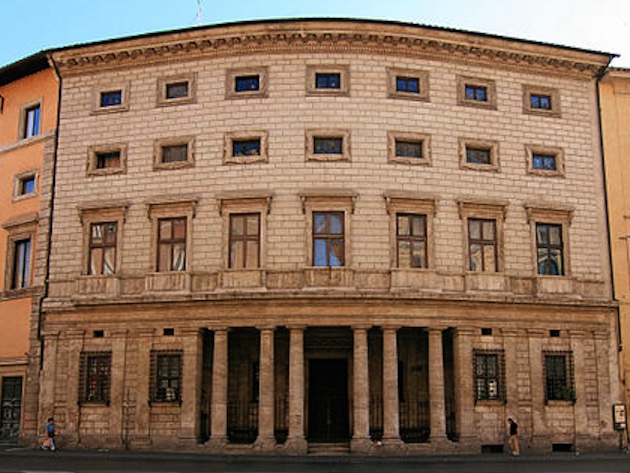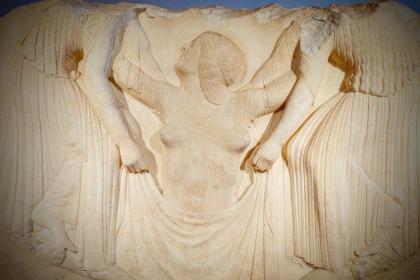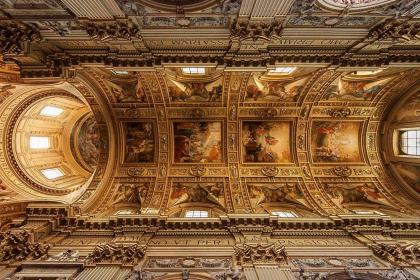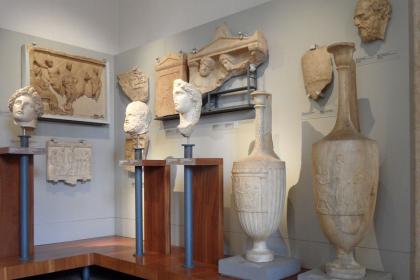
The Palace is located along Corso Vittorio Emanuele II in the city centre, and is the masterpiece of the architect Baldassarre Peruzzi who built it where the fifteenth-century houses of the Massimo family once stood, destroyed in the sack of Rome in 1527. The convex façade of the building takes the shape of the cavea of Domitian's Odeon, a theater for musical auditions located south of the stadium, both built by the emperor himself. Made with flat ashlar, it has a portico composed of six columns combined in the centre, which creates a remarkable chiaroscuro effect; on the sides are large rectangular windows closed by railings. Above is the noble floor, delimited by a projecting frame on which rest seven architraved windows with balconies.
On the second and third floors there are smaller rectangular windows, with original framing; crowning is a cornice with shelves and rosettes. The portico is decorated with very fine stuccoes in the coffered ceiling and has two niches with statues at the ends: from this one can enter through the various courtyards of the building. The interiors, of refined elegance, are enriched by splendid frescoes, classical statues, precious furniture and tapestries. On the second floor is the room, transformed into a chapel in the eighteenth century, where Saint Filippo Neri worked a miracle on 16 March 1583, bringing back to life the son of Fabrizio Massimo, Paolo.
At the beginning of the nineteenth century the palace was internally connected with that of Pyrrhus, next to it. The building still belongs to the Massimo family and is closed to the public.
Photo credits: Courtesy of pro loco of Rome official site
Museo Nazionale Romano - Palazzo Altemps

 Condividi
Condividi
Basilica of Sant'Andrea della Valle

 Condividi
Condividi
The Giovanni Barracco Museum of Ancient Sculpture

 Condividi
Condividi
Information
Private building closed to the public.
 Condividi
Condividi
Location
To find out about all accessibility services, visit the Rome accessible section.











































